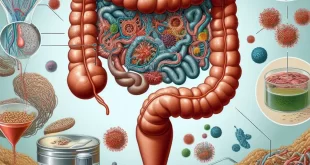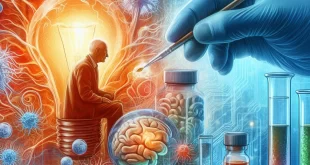Since the advent of the internet, the use of pornography has reached dizzying heights. Pornhub, the largest free porn site in the world, received more than 33.5 billion visits in 2018.
The science is just beginning to reveal the neurological repercussions of the consumption of pornography. But it is already clear that its effects are catastrophic for the mental health and sex life of its wide audience. With serious consequences like depression or erectile dysfunction, pornography seems to be transforming our “neural cabling”.
In my lab, we study neural cabling related to the learning and memory process. The properties of porn videos make it a powerful trigger for plasticity, the ability of the brain to change and adapt according to the experience. Given the accessibility and anonymity that comes with the use of online pornography, it makes us more vulnerable than ever to its hyper-stimulating effects.
Impacts of Pornography Consumption
In the long run, pornography seems to create sexual dysfunction, especially the inability to achieve erection or orgasm with a real partner. The quality of the marital relationship and commitment to a spouse also appears to be compromised.
In an attempt to explain these effects, scientists have drawn parallels between the consumption of pornography and drug abuse. By its evolution, the brain is programmed to respond to sexual stimulation by a surge of dopamine. This neurotransmitter, most often associated with the anticipation of reward, is also used to record memories and information in the brain. So when the body needs something, like food or sex, the brain remembers where it can go to find the same pleasure.
Instead of turning to their spouse for gratification or sexual fulfillment, those who are used to consuming porn instinctively look for their phone or computer when the desire arises. In addition, abnormally strong explosions of reward and pleasure cause unusually high brain dependence.
Norman Doidge, psychiatrist, explains: “Pornography meets all the prerequisites for neuroplastic change … When pornographers boast of pushing the boundaries by introducing new, more extreme themes, they do not say they have to do it because their customers develop a tolerance for content. “
Pornographic scenes, such as addictive substances, are hyper-stimulatory triggers that result in abnormally high levels of dopamine secretion. This can damage the reward system of dopamine and make it insensitive to natural sources of pleasure. That’s why consumers are less and less excited by a real partner.
Beyond dysfunction
The desensitization of our reward circuits sets the stage for sexual dysfunction to develop, but the repercussions do not stop there.
Studies show that changes in dopamine transmission can lead to depression and anxiety. Consistent with this observation, pornography consumers report stronger depressive symptoms, poorer quality of life and poorer mental health than those who do not, says a study by the Journal of Sexual Medicine.
The other important discovery of this study is that compulsive porn consumers want and need more and more porn, even if they do not really like it. This disconnect between what one wants and what one likes is a characteristic of the disturbance of the reward circuit.
In a similar survey, researchers at the Max Planck Institute in Berlin, Germany, discovered that the increased use of pornography correlated with reduced brain activity in response to conventional pornographic images. This explains why users tend to switch to more extreme forms of pornography.
Data on Pornhub reveals that conventional sex is less and less interesting for users who turn to themes such as incest and violence.
The effect of mirror neurons
The perpetuation of sexual violence online is particularly troubling as actual incident rates may increase accordingly. Scientists attribute this effect to the action of mirror neurons. These brain cells are aptly named because they react when the individual performs an action, but also by observing the same action done by someone else.
The areas of the brain that are activated when someone looks at pornography are the same as when the person has sex. Marco Iacoboni, a professor of psychiatry at the University of California at Los Angeles, hypothesizes that these systems have the potential to spread violent behavior: “The mirror mechanism in the brain also suggests that we are automatically influenced by what we observe, thus proposing a plausible neurobiological mechanism for the contagion of violent behavior. “
The suggested association between pornography, mirror neurons and increasing rates of sexual violence, although speculative, is a serious warning. If a heavy consumption of pornography does not necessarily lead to dangerous extremes, it is likely to change behavior.
Moral development
Porn consumption has been correlated with the erosion of the prefrontal cortex – the region of the brain that houses executive functions such as morality, will, and control of impulses.
To better understand the role of this structure in behavior, it is important to know that it remains underdeveloped during childhood. That’s why children struggle to regulate their emotions and impulses. Prefrontal cortex lesions in adulthood are called hypofrontality and predispose the individual to act compulsively and make bad decisions.
It is somewhat paradoxical that adult entertainment can bring our brains back to a juvenile state. What is even more so, is that if pornography promises to satisfy and provide sexual gratification, it actually produces the opposite.
 medjouel.com Study Non Stop
medjouel.com Study Non Stop



